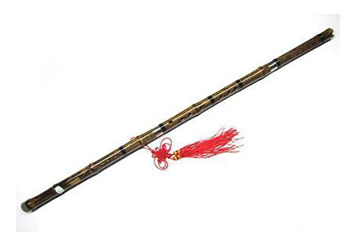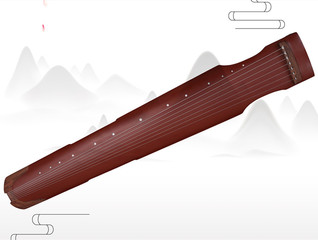Chinese Instrumental Connectives
The melodic orchestra plays instrumental connectives (guomen)that serve as preludes to the sung melodic passages, as interludes between them, and often as codas to them, instrumental connectives are therefore closely related to the accompaniment of song. because they introduce, connect, and sometimes conclude that accompaniment. In spite of this close connection, however, instrumental connectives are usually classified as a function separate from the accompaniment of song by both musicians and stage performers. There are two major reasons for this classification.
The first reason may be termed the "source of the melodic initiative."The specific melody of every sung melodic-passage originates with the singing performer; the melody played by the jinghu player in accompaniment is a variation on that specific melody, and the jinglhu player follows the singer when playing that accompaniment. However, instrumental connectives are purely instrumental; when the jinghu player leads the melodic orchestra in playing them, he or she follows only the tempo and rhythm set and maintained by the conductor with the drum-and-clapper. Because there is no sung melody during instrumental connectives, the melodic initiative is, within the patterns of the mode and metrical type, the jinghu player's own.
Second, the purpose of instrumental connectives is somewhat different than that of accompaniment for song. In the accompaniment of singing, the jinghu provides the major variation on the melody sung by the singing performer, with the other instruments of the melodic orchestra providing additional variations. Prelude instrumental connectives, however, introduce and establish the atmosphere and emotional color of the sung melodic-passages that follow; interlude instrumental connectives maintain that atmosphere and emotional color when the singer is not actually singing but the song has not yet concluded, and concluding instrumental connectives "round off" that atmosphere and emotional color. Additionally, interlude instrumental connectives serve to punctuate the dou, clarifying meaning by making the units of meaning distinct. Instrumental connectives are there fore interpretively quite important. But the focus of every song is on the display of song skill by the singer(s) in the expression of emotion. Although the singer may adapt his or her melody to suit performance conditions, instrumental connectives are more melodically fixed, serving as constants between the more melodically flexible melodic-passages of the singer and his or her accompaniment.




